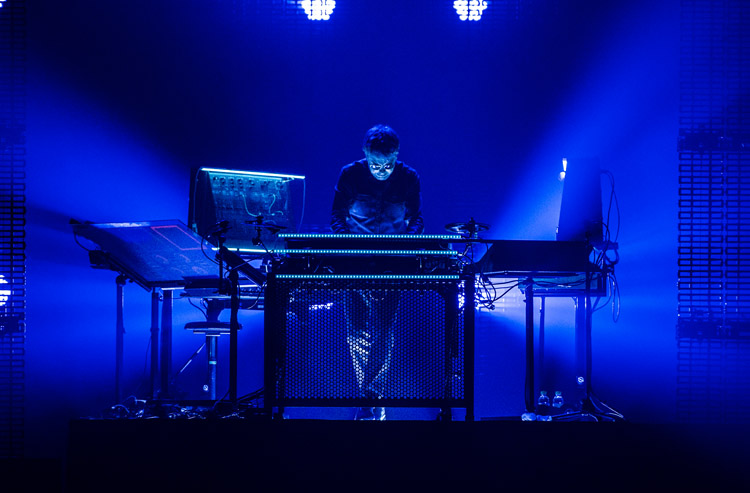
Floating synthesizer sounds, a Moog purrs and squeaks, and slowly a melody emerges. After about eight minutes, a bass begins and interrupts the atmosphere slightly stepping away. Meanwhile, the synthi fires nervously in the background like rockets. And above all hovers a soothing, constantly repeating melody. An ethereal melodic intermezzo finally leads to what is today one of the most popular electronic pieces of all time: "Oxygène 4". This simple melody in combination with bubbling synths could even be played in a disco - that was new. The first modern electronic album was born, recorded in 1976 by Jarre soloing on eight tracks with instruments like Arp Synthesizer, Mellotron, Farfisaorgel and AKS Synthesizer. This music has no message, but it invites you to daydream.
Even if the true pioneers of the genre Tangerine Dream, Klaus Schulze, Popul Vuh and Vangelis are called, "Oxygène 1-6" changed the popular music lastingly and sold more than 15 million copies until today.
In 1996, Jean-Michel Jarre started "Oxygène 7-13" where he had left off 20 years earlier and dedicated the result to his teacher Pierre Schaeffer. With classical equipment he created meditative variations of his own theme in his studio in Croissy-sur-Seinne with the help of keyboard player Francis Rimbert and programmer Christian Sales. He combined the spherical sounds with contemporary grooves in parts. Although the album is altogether more unimaginative, lifeless and distanced than "Oxygène 1-6", it secured Jarre at least another entry in the Guinness Book of Records (via the megaconcerts).
The seven compositions on "Oxygène 3" are the result of a spontaneous intuition that the keyboardmaster had two years ago. At the time, he was working on his spectacular "Electronica" project in Paris. Something about an idea that had just flown to him reminded him of his 40-year-old classic, and so he decided to take exactly six weeks to record its third part. He asked himself what "Oxygène" would sound like if the sound of that time were continued with the means of today. The seven new compositions breathe something of nature, but also of architecture. The spherical album was recorded in Paris, one of the most beautiful cities in Europe, with more than 400 parks and gardens, but also with a dark, mysterious side. Jarre has once again worked with well-known motifs and painted magnificent sound paintings next to minimalist sound backdrops that bring life back to the studio. In general, he has come up with a number of tension-forming elements this time. It cannot be said, however, that with "Oxygène 3" he would have added new forms and sounds to the electronic music genre.


